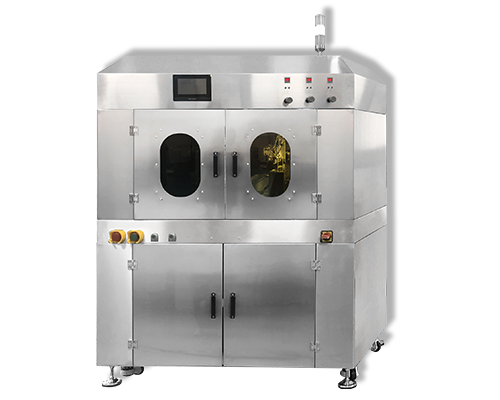Electrospun Fiber
Electrospun fibers shine in the fields of orthopedics and artificial vascular stents
Why Choose Electrospinning Technology
With the development of nanotechnology and the emergence of polymer materials, synthetic nanofibers are gradually known and widely used in catalysis, energy, biomedicine and other fields. Among the many preparation methods of synthetic nanofibers, electrospinning has become one of the best choices due to its simplicity, quickness, cost-effectiveness and high efficiency.
1. The development history of electrospinning technology
Electrospinning technology originated in the early 20th century and has a history of about 80 years.
In the mid-1990s, American researchers confirmed the feasibility of electrospinning to prepare nanometer particles. Since then, this technology has attracted the attention of researchers, electrospinning has developed rapidly, and scientists have made progress in mechanism, process, and application research.
At the beginning of the 21st century, scientists used electrospinning technology to produce different polymer nanofibers, and applied them in the fields of biomedical tissue engineering, drug sustained release, wound dressing and other directions.
2. The basic principle of electrospinning
The electrospinning system includes a high-voltage power supply, a syringe pump, a rotating polymer solution, and a receiving device (as shown in the figure). The principle is that a viscoelastic solution is squeezed into a jet under high electrostatic force to form continuous nano/micro fibers . Fiber materials with nanoscale dimensions are obtained by processing high molecular polymers under set parameter conditions. It has the advantages of low equipment cost, simple device, and easy operation. It can realize fiber orientation, structure, and shape control. Synthesis Composite/multifunctional nanofiber materials.
3. Application of electrospun nanofibers in tissue engineering scaffolds
Bone tissue repair material
The repair of bone defects is a common problem in clinical practice. Traditional repair methods mainly include autologous bone graft, allogeneic bone graft and allogeneic bone graft. However, these traditional methods have the disadvantages of causing secondary harm to patients and possibly causing immune reactions. Electrospun fiber scaffolds have the advantages of similar structure to natural bone, good biocompatibility, can promote tissue growth and degrade in a suitable time, and are widely used in bone regeneration and repair. Nanofibrous scaffolds can exert mechanical stimulation on human bone tissue, release the loaded drugs, and provide a suitable microenvironment, thereby stimulating the differentiation of bone marrow stem cells into bone cells, and ultimately promoting bone repair.
Cartilage Repair Scaffold
Articular cartilage injury is a common joint disease that may affect people of all ages, and the number of surgical operations involving cartilage is increasing year by year, and cartilage repair scaffolds have received extensive attention. Studies have shown that ε-caprolactone (PCL) micro-nanoscale three-dimensional nanostructured scaffolds can effectively promote the proliferation of chondrocytes.
Artificial vascular stent
Blood vessels provide a channel for the transportation of nutrients and the metabolism of tissues and organs, and vascular-related diseases have become one of the main causes of death. Surgical replacement or transplantation is the main treatment method, and autologous blood vessels are difficult to meet clinical needs. Vascular tissue engineering technology provides a new source for vascular transplantation. Vascular scaffolds play a major role in supporting cell growth and tissue repair, and are also the key to vascular tissue engineering. The nanofiber composite scaffold prepared by electrospinning has good biocompatibility, can support the good proliferation of smooth muscle cells and vascular endothelial cells on it, and has been widely used in the treatment of vascular diseases.
Ultrasonic nozzles are particularly suitable for a wide range of medical coating applications due to their very precise, non-blocking, repeatable spray performance and extremely low flow rate capability. For several years, Cheersonic has been providing ultrasonic medical coating system to medical device manufacturers worldwide. As medical device technology evolves, we will continue to design unique medical coating ultrasonic spray solutions to enhance patient safety and provide the highest quality medical device coating on the market.
Chinese Website: Cheersonic Provides Professional Coating Solutions


